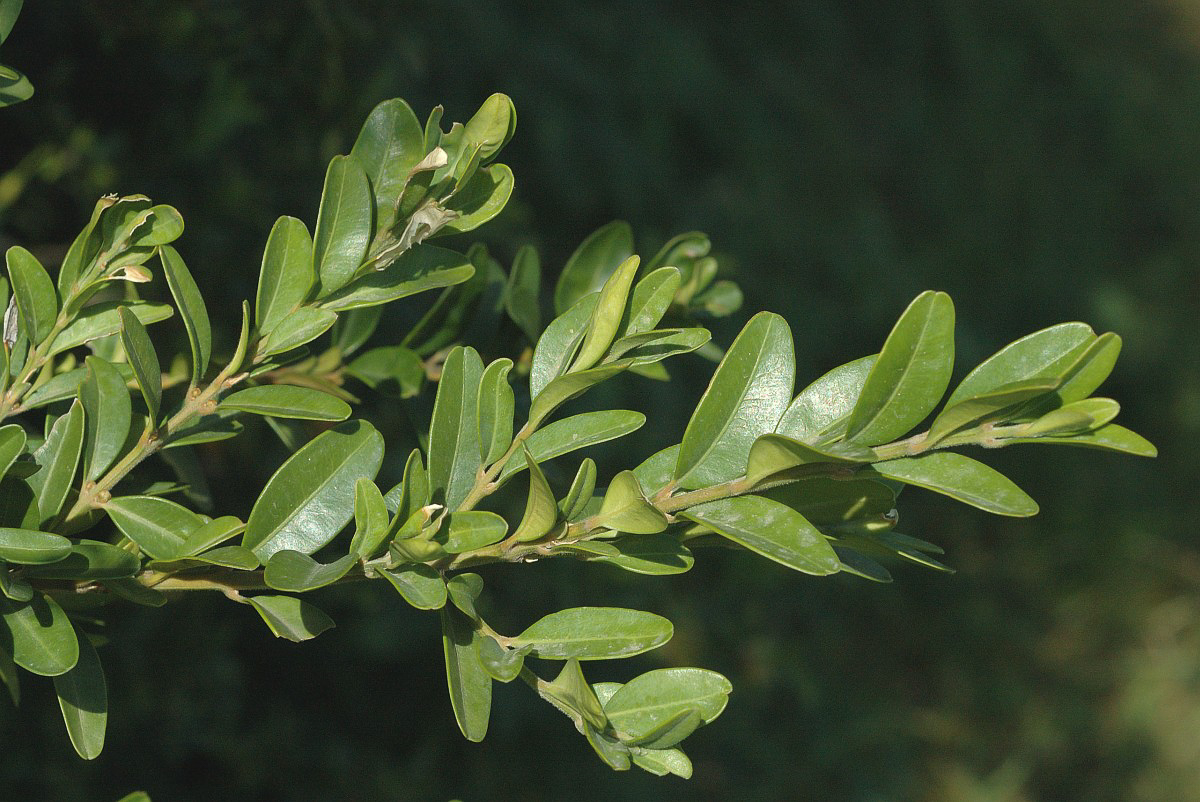Common Box
Scientific name: Buxus sempervirens L.
Family: Buxaceae
MORPHOLOGY
Habit and dimensions: Evergreen shrub, ranging from 0.3 to 3 m in height; sometimes also prostrate-ascending shrub or (rarely) small tree of 2-8 m, with a dense canopy.
Stems: Yellowish-ochre or greyish stem, with a rough reticulated bark; branches more or less twisted, young ones brownish-green and somewhat hairy, quadrangular; strong and deep root system. Buds minute, sharp, covered by two small bracts.
Leaves: Opposite, leathery, dark glossy green on the upper surface, light green underneath, with a very short petiole (1 mm); blade with prominent midrib, oval, sometimes subrounded, and when young, concave superiorly (spoon-shaped), entire, often revolute, mucronate at the apex, 6-12 mm wide and 10-25(30) mm long.
Flowers: Unisexual flowers (diameter 5 mm) in axillary inflorescences (glomerules) yellowish-green, calyx with 4 lobes, with a central female flower lacking corolla, with trilocular ovary, 3 styles much shorter than the capsule, and 3 stigmas, surrounded by several male flowers, also lacking corolla, with 4 protruding stamens. Blooms between February and April.
Fruits and seeds: The fruits are obovoid tricoccous capsules (7 mm), leathery; 2 seeds per locule, trigonous, black and shiny.
DISTRIBUTION AND HABITAT
Widespread throughout Italy except for the major islands, Calabria, and Molise. Cultivated, but can also be found under light to moderate cover in thermophilic broad-leaved forests, on cliffs, and rocky slopes; from 0 to 800 m.
USE
In medicine, bark, leaves, and young shoots are used, containing alkaloids (buxine), essential oils, and resins. Properties include antipyretic, antirheumatic, sudorific, purgative, disinfectant, and healing. It used to replace quinine in antimalarial therapy. Excessive doses can be very dangerous due to the toxic (tetanizing) power of buxine. Before taking any plant-based product (medicine or non-medicine) for therapeutic or similar purposes, it is always advisable to consult a doctor beforehand. Being a very long-lived, even centuries-old plant, with extremely slow growth, the wood becomes compact and extremely hard; since ancient times, it has been used for wind musical instruments, inlays, boxes, taps for barrels, and chess pieces. It is also noteworthy for its decorative use in topiary gardens worldwide, as it responds well to all types of pruning.
INTERESTING FACTS
Anciently regarded as a magical shrub with supernatural virtues, symbolizing the perpetuity of life, steadfastness, and perseverance. It was believed to act against impotence and stimulate fertility. In the Middle Ages, it was also used in a sacred context, with vessels made of its wood used as containers for consecrated hosts.
Photo: Used under a free license from Saxifraga and Jan van der Straaten.



















